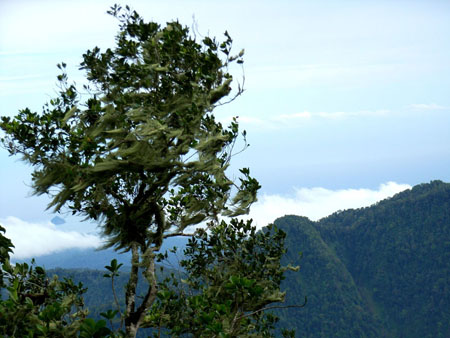Tropical rainforests are the terrestrial biome with the greatest diversity of plant and animal species. Long-term stability has been considered for long as a prime cause of this remarkable biodiversity. However, paleoecological evidence of substantial change in the vegetation of tropical regions resulting from global climate fluctuation during the Quaternary, as well as evidence of significant ecological perturbation by humans in the last few thousand years, call for a reassessment of the temporal dynamics of biodiversity in tropical rainforests, and how this may influence their resilience and/or adaptation to rapidly accelerating human impact.
General objective of the research: understand how past climate changes and the activities of ancient indigenous societies have shaped the current distribution and composition of African rainforests and the genetic diversity of their constituent tree species.
This knowledge is essential for forecasting how the forest will respond to current and future environmental impacts, because the way tropical forests have responded to past climatic and human perturbation reveals their resilience, or innate adaptive capacity, to current and future perturbations resulting from massive ongoing deforestation, forest degradation and anthropogenic climate change.
More specifically, the project aims to:
:
Understand the processes leading to the diversification/differentiation of African rainforest tree biodiversity at inter-specific and intra-specific levels, in particular the respective roles of (i) past population fragmentation and the associated genetic drift (neutral stochastic process) and (ii) differential selection leading to adaptation to different habitats along environmental gradients (deterministic process).
Document the main climatic and anthropogenic perturbations which affected the past vegetation dynamics in the Congo basin for a range of relevant time scales, with particular emphasis on (i) the last glacial-interglacial cycle, (ii) the late Holocene where traces of forest fire become abundant, and (iii) the last two centuries when current tree communities were established.
Develop and calibrate a vegetation model able to simulate reliably the changes in (i) vegetation, (ii) productivity, and (iii) species distribution ranges in response to environmental forcing, in order to make predictions under scenarios of climate and anthropogenic environmental changes.

 accès campus
accès campus
 bacheliers (liste des formations)
bacheliers (liste des formations)
 contacts
contacts
 formation continue
formation continue
 la recherche à l'ulb
la recherche à l'ulb
 musées de l'ULB
musées de l'ULB
 service communication
service communication
 actualités de l'ULB
actualités de l'ULB
 calendriers
calendriers
 documents officiels
documents officiels
 hôpitaux universitaires
hôpitaux universitaires
 les débats de l'ULB
les débats de l'ULB
 plan langues
plan langues
 soutenez l'ULB
soutenez l'ULB














 École interfacultaire de bioingénieurs
École interfacultaire de bioingénieurs L'ULB sur Facebook
L'ULB sur Facebook L'ULB sur Twitter
L'ULB sur Twitter L'ULB sur Instagram
L'ULB sur Instagram ULB TV
ULB TV L'ULB sur Scoop.it
L'ULB sur Scoop.it L'ULB en tant qu'entreprise
L'ULB en tant qu'entreprise Le flux RSS de l'ULB
Le flux RSS de l'ULB Les Facultés et Services de l'ULB
Les Facultés et Services de l'ULB









